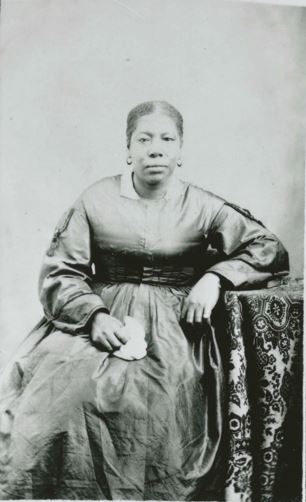Life did not cease to be difficult for Jane in Utah. Like many early saints, she struggled to grow food and provide for her family, Jane’s, and the other saints were desperate for food. Crickets ravaged the saints’ crops. Jane and her young children suffered in their new home. Her youngest, Mary Ann, was only a year old by the Manning family’s second year in Utah. In her biography, Jane records “ Oh, I suffered of cold and hunger and the keenest of all was to hear my little ones cry for bread, and I had none to give them; but in all the Lord was with us and gave us grace and faith to stand it all.”
Jane personally suffered so much at this time, but her children’s pain hurt her more. Her motherly grief is yet another testament to her charity. Despite this economic hardship and despair, Jane’s character was unconquerable. She was determined to be generous and kind. Eliza Lyman, one of Jane’s neighbors, writes this story in her journal about Jane’s charity. At the time Eliza wrote this, her husband had left for missionary work in California.
“ We baked the last of our flour today, and have no prospect of getting more till after the harvest……. He (Eliza’s husband) left us without anything from which to make bread, it not being in his power to get it Not long after Amasa had gone, Jane James, the colored woman, let me have two pounds of flour, it being half of what she had.”
In such hard times, Jane was kind enough to help those around her. Surely there were times she must have felt different or isolated from the mostly white community, but she continued to express true charity.
Even though Jane exemplified every virtue a Church member ought to, she was denied some of the privileges associated with membership in the Church. Unfortunately, at this time, the Church of Jesus Christ of Latter-Day Saints had rules that prevented people of color from fully participating in the Church, things like worship and eternal marriage within the temple. Jane was determined to be a part of these ceremonies in the temple. Despite the Church’s policies that prevented her from fully participating, Jane continued to petition Church leaders to allow her into the temple. Jane’s letters to church authorities are polite, but fiery. She writes using scriptural references and sound rhetoric. She was so persistent and convincing, that the church conceded a little bit and allowed her to participate in some of the temple ceremonies previously denied to her. Despite the exclusion, Jane was friends with some of the church leaders, such as Joseph F. Smith, who even spoke at her funeral.
Jane’s personality and actions are remarkable. Despite so much trouble and hardship, she always found a reason to be grateful and charitable. Her strength came from the joy she found even in dark and painful moments. Jane’s charity and tenacity began to break the barriers among the white community, despite the tension at this time period of Civil war and racism.
We wouldn’t know about Jane’s joy, gratitude, and strength if not for her paper trail. There are some things written about her from the time period. Her friendship with Joseph Smith, first president of the Church of Jesus Christ of Latter-day Saints, made her the subject of some interviews for the occasional church publication. But it’s her own writings and narrative that make her truly unique. Her correspondence with church leaders over the temple issue has also been preserved. But her most important record is the one she dictated herself for the specific purpose of inspiring her children, grandchildren and beyond.
Jane called on Elizabeth Roundy to record her life history at the age of 80. She realized (at least a little bit) the remarkable and touching life that she’d had. She also asked for this brief life history to be read out loud at her funeral. Her last recorded words are:
“I want to say right here, that my faith in the Gospel of Jesus Christ as taught by the Church of Jesus Christ of Latter-Day Saints is as strong today, nay, it is stronger than it was the day I was first baptized… I try in my feeble way to set a good example to all; I have had eighteen grandchildren eight of them are living also seven great grandchildren. I live in my little home. We are the last two of my mothers family. I want him to stay there after me. This is a concise but true sketch of my life and experience.”
Jane wants her family to remember her example and her experiences and to protect the bond and family heritage that she worked so hard to cultivate. She is one of very few African American women of this time period to write any kind of history for herself. She was very old at this time and losing her eyesight, but she realized how valuable her experiences could be for those who would come after her. Like a true pioneer woman, she prepared a way for those coming after by drawing them a map with her life experience. Her tenacity, faith and charity have been preserved for all to read and draw strength from; her legacy is one that we can all benefit from as we remember it. To learn more about women of color, visit our website, JohnHutchingsMuseum.org.


